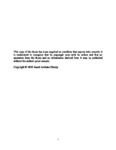BINARY LDPC DESIGN FOR SLEPIAN-WOLF CODING OF CORRELATED INFORMATION SOURCES
| dc.contributor.supervisor | AMBROZE, MARCEL ADRIAN | |
| dc.contributor.author | ELERUJA, SAEED ANIBABA | |
| dc.contributor.other | School of Engineering, Computing and Mathematics | en_US |
| dc.date.accessioned | 2021-04-30T14:48:41Z | |
| dc.date.issued | 2021 | |
| dc.date.issued | 2021 | |
| dc.identifier | 10511605 | en_US |
| dc.identifier.uri | http://hdl.handle.net/10026.1/17080 | |
| dc.description.abstract |
Communication has shifted from simple point-to-point communication to network communication with many senders and/or receivers. These networks are distributed in nature and require the formation of low-delay and energy-limited communication schemes which make use of correlated sources in which common information from the sources is carefully managed to avoid duplication, thereby attaining the optimal usage of channel resources. Slepian and Wolf first proposed and developed a scheme where multiple information sources can be jointly compressed at a rate greater than the sum of their respective rates if compressed separately. The major challenges in existing schemes are three, namely, the modelling of a correlation channel; consideration for systems with stringent delay restrictions; and the tradeoff between error correction performance and associated complexity. The aim of this research is to develop efficient means of improving the performance of distributed source coding, particularly, the Slepian-Wolf coding schemes. An Additive White Gaussian Noise (AWGN) equivalent channel is proposed and implemented. Subsequently, to justify the correlation between information sources, a binary symmetric equivalent channel is developed. It is understood from Shannon’s theory that block codes of sufficiently large length are asymptotically optimal. This justifies the use of binary channel codes like Low-Density Parity-Check (LDPC) codes for practical Slepian-Wolf coding. Thus, LDPC codes of block lengths n=512, 100 and 1024 were applied on the equivalent channel models and simulation results show improvement over other schemes with similar code lengths. Furthermore, to address the problem of systems with stringent restrictions on delay, new schemes were modelled to utilize very short, low delay codes like the [7, 4, 3] Hamming code, the [15, 7] BCH code as well as the [47, 24, 11] Quadratic Residue (QR) code. Particularly, an improved source coding scheme is proposed to correct a single-bit error of the [47, 24, 11] QR code based on the modification of the Dorsch decoder without the implementation of maximum-likelihood decoding. Finally, a framework is established for attaining maximum likelihood decoding and the associated complexity is presented. | en_US |
| dc.language.iso | en | |
| dc.publisher | University of Plymouth | |
| dc.rights | Attribution-ShareAlike 3.0 United States | * |
| dc.rights.uri | http://creativecommons.org/licenses/by-sa/3.0/us/ | * |
| dc.subject | Communications | |
| dc.subject | Distributed Source Coding | |
| dc.subject | Slepian-Wolf coding | |
| dc.subject | Quadratic Residue (QR) codes | |
| dc.subject | Modified Dorsch Decoder | |
| dc.subject | Maximum Distance Separable (MDS) codes | |
| dc.subject | Coding | en_US |
| dc.subject | Low Density Parity Check (LDPC) codes | en_US |
| dc.subject | Belief Propagation/Sum-Product Algorithm (BP/SPA) | en_US |
| dc.subject.classification | PhD | en_US |
| dc.title | BINARY LDPC DESIGN FOR SLEPIAN-WOLF CODING OF CORRELATED INFORMATION SOURCES | en_US |
| dc.type | Thesis | |
| plymouth.version | publishable | en_US |
| dc.identifier.doi | http://dx.doi.org/10.24382/888 | |
| dc.rights.embargodate | 2022-04-30T14:48:41Z | |
| dc.rights.embargoperiod | 12 months | en_US |
| dc.type.qualification | Doctorate | en_US |
| rioxxterms.version | NA | |
| plymouth.orcid.id | https://orcid.org/0000-0001-7208-3157 | en_US |
Files in this item
This item appears in the following Collection(s)
-
01 Research Theses Main Collection
Research Theses Main



